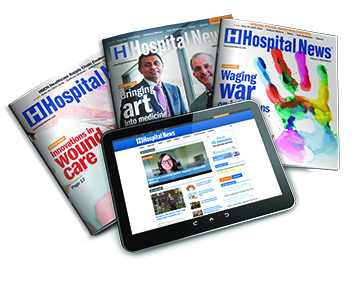Bracing for a potential cancer diagnosis is scary enough. Knowing you have to undergo surgery to gain that diagnosis makes it even worse.
At St. Joe’s, a special diagnostic tool is now in use to help patients with potential lung cancer avoid surgery, get answers faster, and begin treatment sooner if needed.
It’s called an EBUS – or Endo-Bronchial Ultrasound.
“The EBUS machine allows us to biopsy lymph nodes from within the airway,” says Dr. Chris Compeau, Chief of Surgery at St. Joe’s. The EBUS uses an ultrasound probe and a needle to do the work, he explains.
“It’s less invasive,” adds respiratory therapist Kyle Davies. “So there’s less risk for infection, and less risk of extra complications.”
Having an EBUS at our disposal is a big boost for patient care at St. Joe’s. Lung cancer remains a serious problem, notes Dr. Compeau, adding it’s the number one cancer killer in both men and women in Ontario over the age of 50. “(The EBUS) is something that we recognize is going to enhance the care to our patients,” he says.
MORE: THE LATEST IN PERSONALIZED CANCER CARE
We can also thank many of our patients for helping bring this tool to the Health Centre. Over 70 patients helped raise $265,000 last year to purchase the device. They worked in conjunction with the St. Joseph’s Health Centre Foundation and our thoracic team comprised of Dr. Compeau, Dr. Maurice Blitz, Dr. Michael Ko, and many dedicated respirologists and staff.
“This success shows what we can do when we partner with our staff and physicians to improve care for our patients, and how meaningful it is for grateful patients to say thank you by making a gift to St. Joe’s,” notes Maria Dyck, Foundation President.
“It really has been an eye-opening experience to me to see how incredibly generous our donors have been – our patients and their families,” adds Dr. Compeau. “I think it speaks to their gratitude for St. Joe’s for what the Health Centre has provided them.”




